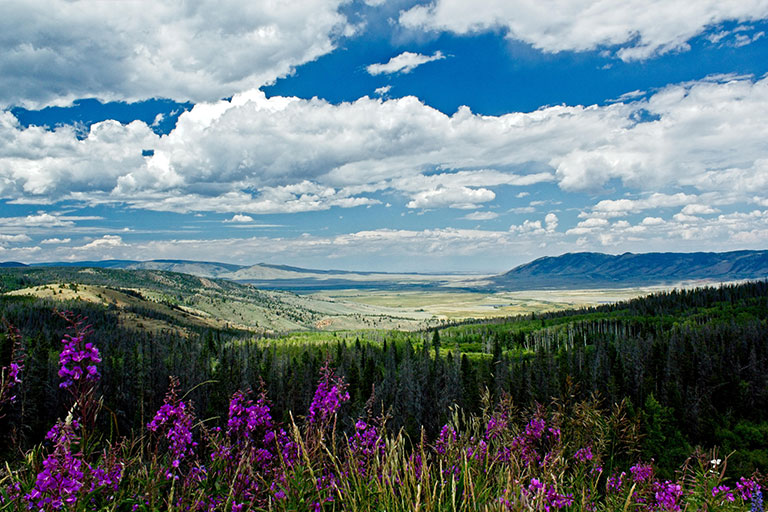By Dennis Smith
It’s June, the beginning of “high summer” here in the Colorado Rockies. It’s also the beginning of what many consider the season’s finest fly fishing, and by finest, I mean classic, small stream fishing with dry flies. For some of us, anyway, this is the spiritual, if not the actual, heart of fly fishing. It embodies the most romantic and traditional tenets of the sport: dry flies, wild colorful fish, jaw-dropping scenery, solitude and, without getting too syrupy about it, that soothing balm of peacefulness you find in the ghostly quiet of wilderness. Truth be told, it’s more often the beauty of the places where wild fish are found that draws us to their environs than it is the fish themselves.
Unfortunately, most of our really good small streams are hidden away in the backcountry and can’t be reached until June, or maybe even July — it depends on how long it takes for the snowpack to melt and the forest service roads to dry out. So, we muddle through spring, fishing ice-out lakes and lowland canyon rivers with midges, nymphs and tiny dry flies while waiting for the backcountry to open up. We gamble with Colorado’s crazy spring weather, too, which can be menacing and wildly unpredictable — a magnificent stew of meteorological delights that includes everything from sunny, 80-degree days to tornado-like winds, booming thunderstorms and full-on, raging prairie blizzards, all in the same week.
Don’t get me wrong; ice-off and spring fly fishing have their charms, too, not the least of which is that winter’s finally over here on the flatlands and we can fish in “real, liquid water” as Colorado writer John Gierach once said. It’s satisfying — in that good-to-be-back-on-the-water-again way — and the fish are larger than those you typically find in the high-country creeks, too. So, there’s that. Still, it seems somewhat drab and gray compared to summer in the high country.
A few summers ago, my friend Dave and I were brookie fishing in a national forest a few miles south of the Wyoming state line. We were hopping from one little no-name creek to another, as well as beaver ponds we found along the way. We spent most of our time in the meadow stretches and glacial moraines of a high valley, but decided one day to take our four-wheelers up the mountain to check out an alpine lake we saw on the topographical map. The trail wound uphill through a dense forest of doghair pine before topping out in a meadow of wildflowers. A mind-boggling panorama of summer-colored mountains covered in spruce, fir and giant rolling stands of quaking aspens fell away before us, ringing a pastel valley of gold and green that stretched to the north as far as we could see. Vast banks of cumulus clouds overhead painted moving shadows over the land below. We sat there, staring quietly. Finally, Dave said, “We should probably get back to fishing.”
Dennis Smith is a freelance outdoors writer and photographer whose work appears nationally. He lives in Loveland.

